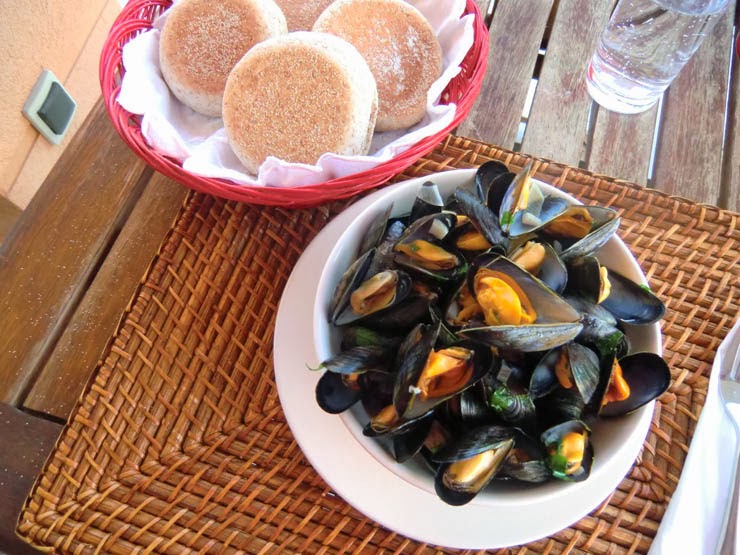Turkey slices, escalopes de dinde, filled with carrots and cauliflowers
Thin turkey slices, escalopes de dinde, are virtually fat free so that you don’t have to worry about using more liberally heart-healthy olive oil in this recipe.
Smoking point for olive oil is between 199 - 207⁰ C depending on its fatty acid content. High quality, low acidity olive oils have the highest smoking points, about 207⁰ C. In this dish, which is cooked in 200⁰ C in oven, you can very well use your best quality extra-virgin olive oil.
The vegetables in this recipe reflect autumn and winter.
2 servings
2 thin turkey slices, about 100- 120 g each
1 large carrot, grated
About 100 g cauliflower, grated (about the same amount than grated carrot)
1 shallot, chopped
1 clove garlic, minced
4 tbsp olive oil
4 tbsp finely grated parmesan
2 tbsp red wine
Freshly ground black pepper
Fresh thyme leaves
150 ml chicken stock
1 tsp Herbes de Provence
Over low to medium heat, warm 1 tbsp olive oil in a large frying pan. Grate the carrot and gently start cooking it in the pan. Add the shallot and garlic and continue cooking for a few minutes. Add the chicken stock and Herbes de Provence, and continue cooking until the vegetables are soft but moist.
Meanwhile grate the cauliflower. Add to the pan and set aside.
Preheat the oven to 200⁰ C.
Line a large ovenproof dish with baking paper. Brush with 1 tbsp olive oil. Halve the escalopes de dinde so that you have 4 thin slices about 50- 60 g each. Place 2 slices into the ovenproof dish. Top with vegetable mixture and then the remaining 2 turkey slices.
Don’t worry if you have more vegetable mixture than fits between the turkey slices. Just shape two heaps of the vegetable mixture in the baking dish and sprinkle with a little dry bread crumbs. These will make nice little vegetable gratins.
Sprinkle 2 tbsp red wine on the turkey slices. Then divide the parmesan on turkey slices and vegetable heaps, and sprinkle with the remaining olive oil.
Bake in 200⁰ C for 35 minutes. Serve with steamed new potatoes and decorate with thyme leaves.





















